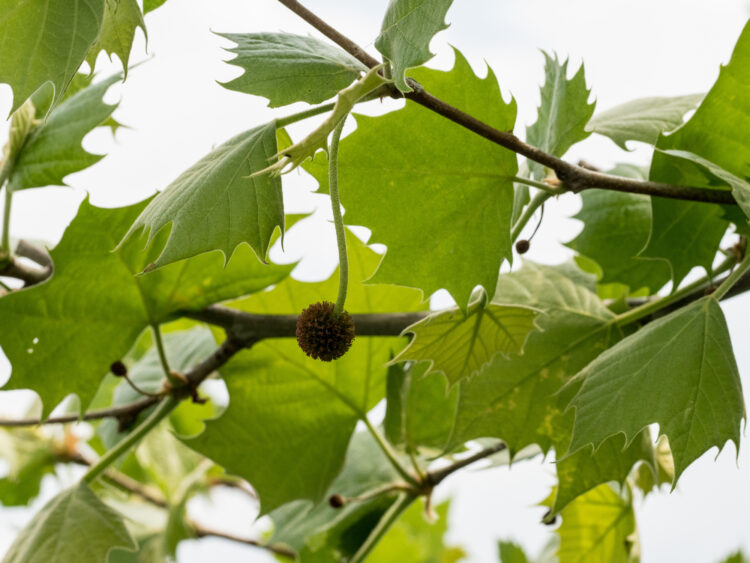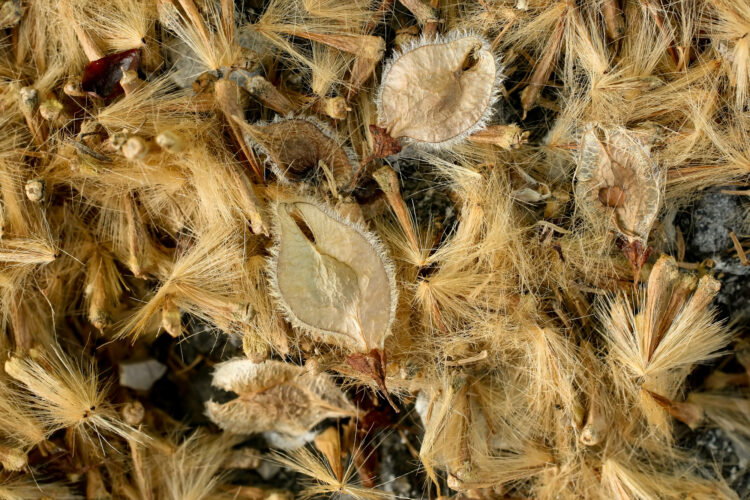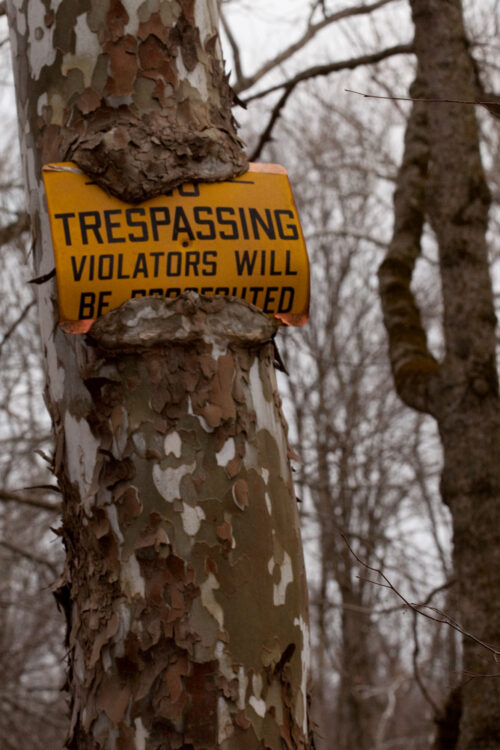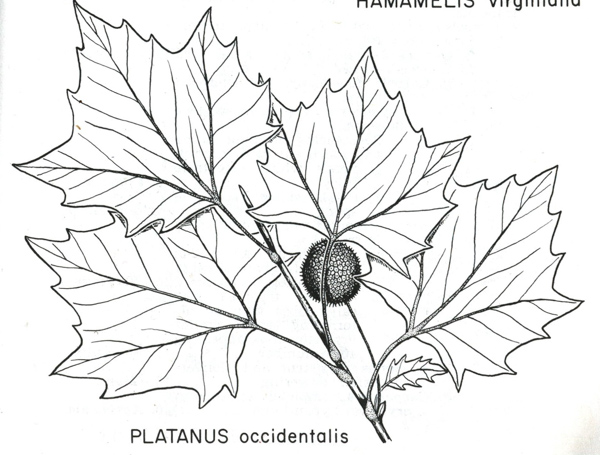American sycamore (Platanus occidentalis)
Platanaceae, the sycamore family
How to recognize American sycamore. The large leaves are vaguely maple-like, i.e., simple and palmately lobed, but alternately arranged.

American sycamore
Flowers and fruits. American sycamore is monoecious, bearing unisexual flowers, both sexes on the same tree. They are produced in dense globe-shaped heads. Being wind-pollinated, they lack showy parts.

Platanus flowers. Left: male; Right: female.
The fruit is a multiple of single-seeded nutlets or perhaps achenes (descriptions vary).

American sycamore young fruit
The fruits mature late in the season but remain attached in a ball-shaped mass until the next spring, when they break apart and are blown about by the wind. Each fruit is a small one-seeded unit with a tuft of hairs attached. They collect on the ground beneath the trees, as shown below along with a few photo-bombing elm fruits (the flat hairy-edged disks).

American sycamore fruits and two elm fruits.
Bark. American sycamore mark is spectacular, as it peels off in thin puzzle-piece sheets exposing nearly inner layers.

American sycamore bark resembles a jigsaw puzzle.
In the winter. The twigs are distinctive, as the buds are completely covered by a single bud scale, and the leaf scars completely encircle the bud. Moreover, a stipule scar is present, completely encircling the twig.

The sycamore bud is covered by a cap-like bud scale.
Where to find American sycamore. E. Lucy Braun, in The Woody Plants of Ohio (1961, 1989; The Ohio State University Press) tells us that this species is “A tree of floodplains, streamsides, and banks where there is local seepage, but not where subjected to long periods of submergence.

American sycamore along a stream.
Scanned Image from an Old Book
(Flora of West Virginia, by P.D. Strausbaugh and Earl L. Core)

American sycamore
Ooh ooh. I have a question!
In what way is American sycamore superlative, and in what way is it not superlative (but what tree is)?
American sycamore is the largest of all eastern trees in girth, but not in height (that honor goes to tuliptree).
